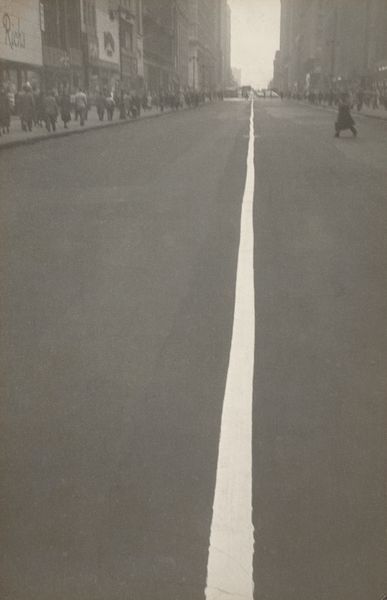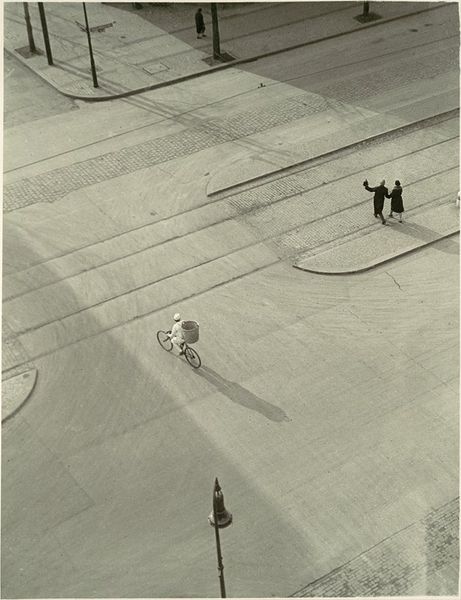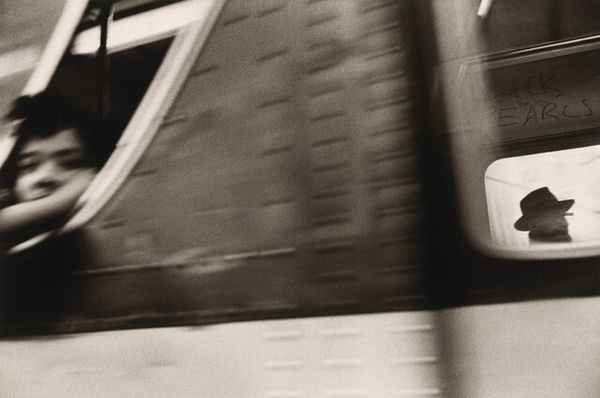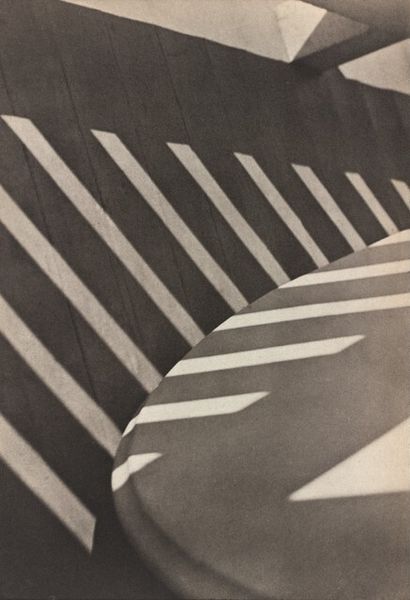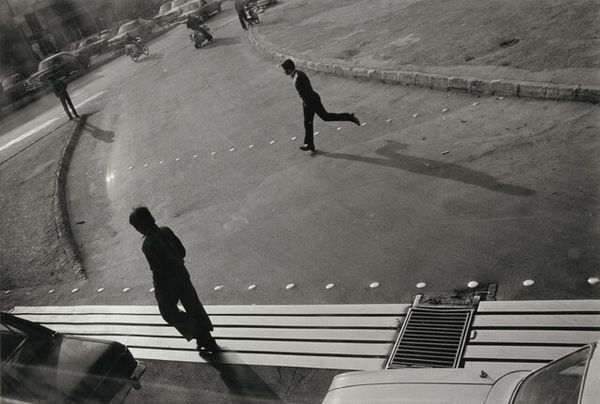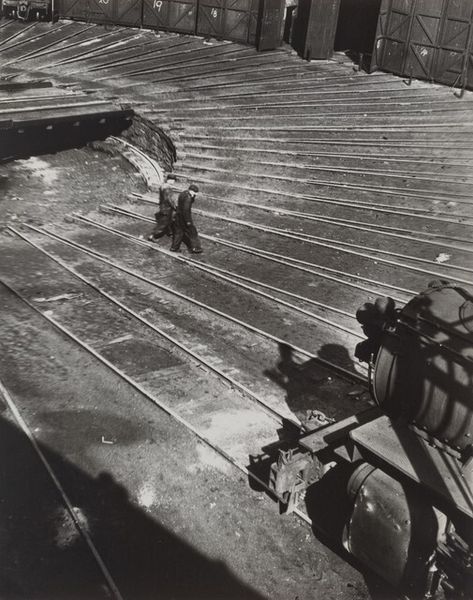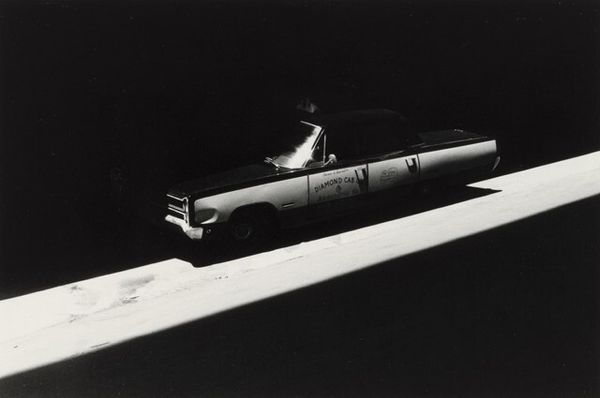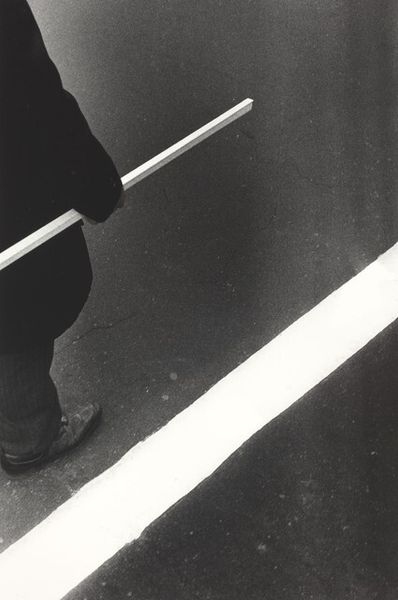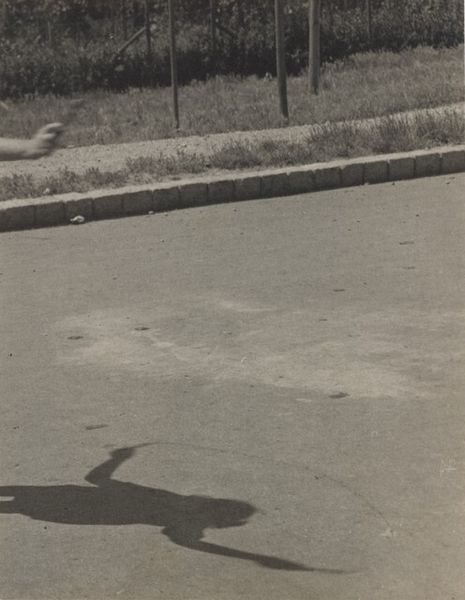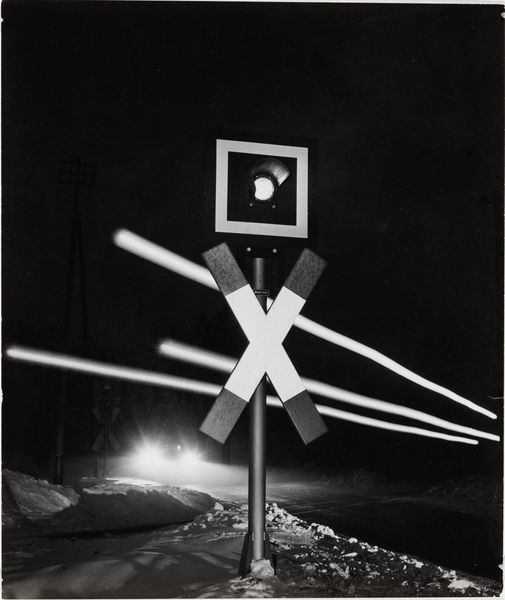
photography
#
precisionism
#
black and white photography
#
landscape
#
photography
#
monochrome photography
#
cityscape
#
monochrome
#
monochrome
Dimensions: Overall: 23.8 x 17.8 cm (9 3/8 x 7 in.) overall: 86.4 x 71.1 cm (34 x 28 in.) framed: 53.7 x 43.5 x 3.2 cm (21 1/8 x 17 1/8 x 1 1/4 in.)
Copyright: National Gallery of Art: CC0 1.0
Curator: "Imperial Highway," a 1936 photograph by Dr. Paul Wolff, offers a strikingly composed view of Germany’s developing infrastructure. Editor: Stark. Almost aggressively so. It’s like looking at the skeleton of a city stripped bare. The texture of the asphalt seems to leap right off the surface. Curator: Precisely. Wolff was known for his precision. It is thought he used a Leica camera. This would make this quite novel for the time and would contribute to the picture's almost hyper-real quality, wouldn’t you agree? A precisionist style combined with technical mastery... Editor: Absolutely, but think about the materiality of this moment. This is pre-war Germany investing in Autobahns; think of the amount of cement and labor poured into constructing this icon of modernity. Look at those expanses of raw material – almost abstract! Curator: And yet, it feels so empty. There’s only a single car visible on that massive roadway. Is it a promise of future bustle, or a monument to human ambition dwarfed by scale? It’s bleak, even hopeful, wouldn't you say? Editor: It speaks of a certain social order being embedded in these layers of road aggregate. This photo’s monochrome palate further emphasises the contrast between the land that surrounds and the hard, man-made construct running right through it. And also, look how carefully it is maintained... the lack of degradation despite its hard-working existence. This speaks to some high-grade construction going on at the time, reflecting German engineering in its rawest form! Curator: Thinking of engineering and design… This work plays into the futurist vision so palpable then, that belief that man can dominate nature through technical and aesthetic advancement. And, though, as we can now plainly see, this never turned out quite as imagined, it really encapsulates its time. Editor: A powerful blend of artistry and evidence then... I’m certainly drawn into considering all the work that went into making this image possible—the laborers who made the raw materials and those who carefully applied and looked after the cement itself. Curator: I walk away haunted and inspired by the vision – its cold beauty still somehow resonates with my deep human yearning. Editor: Me too... It speaks of humanity in an oddly touching, although certainly distanced way.
Comments
No comments
Be the first to comment and join the conversation on the ultimate creative platform.
